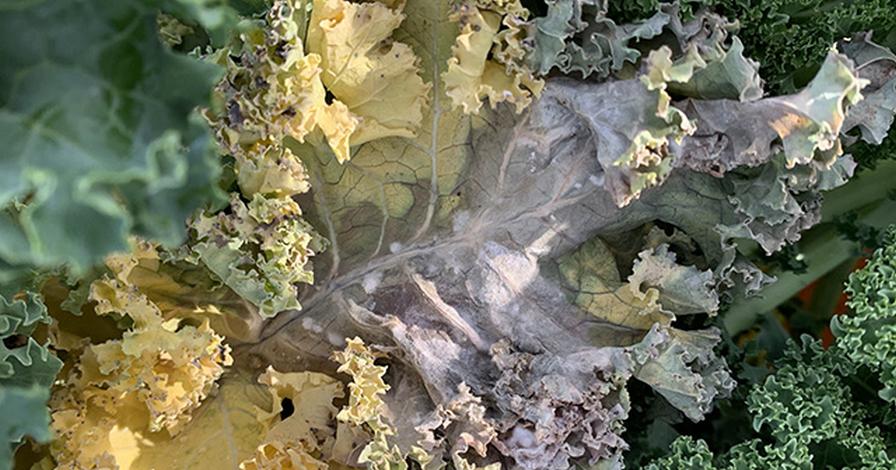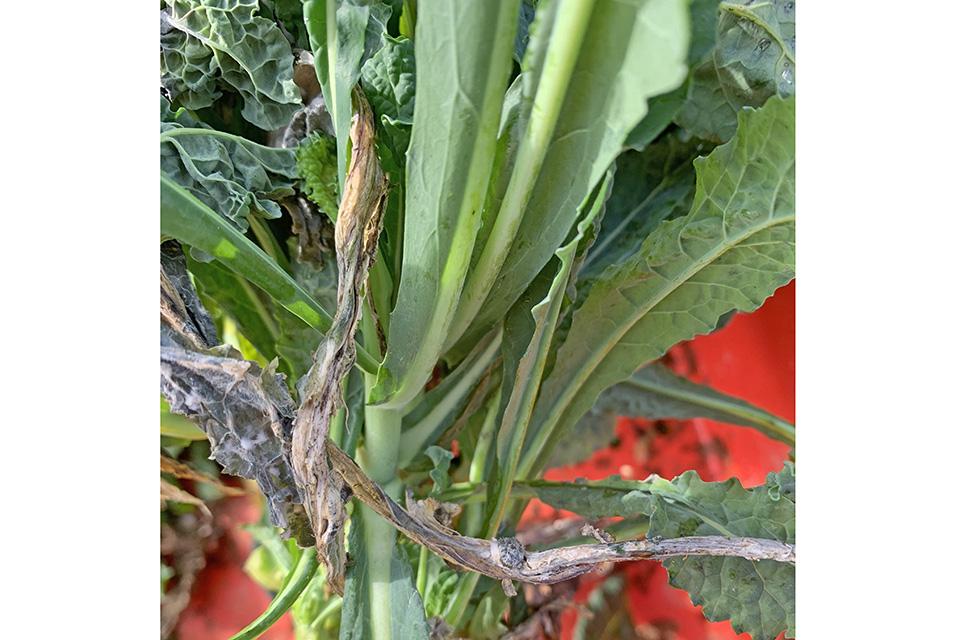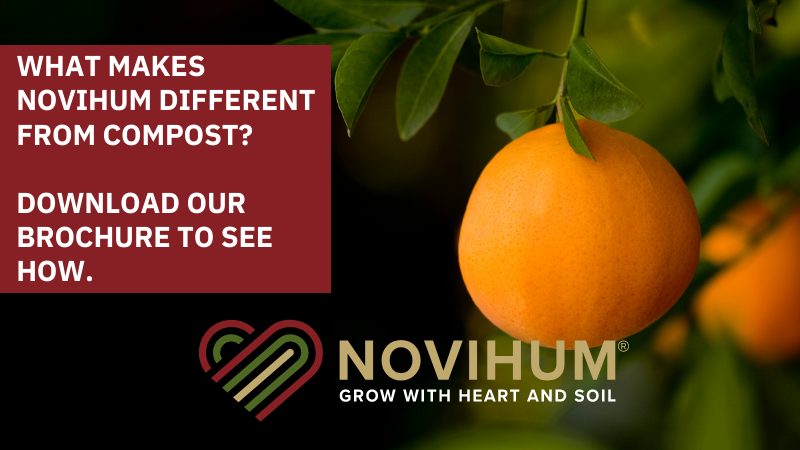What a Wet Winter Means for White Mold and Your Vegetable Crops

White mold symptoms on green curly kale leaf.
Photo by Anthony P. Keinath
I’m not sure if they read The Farmer’s Almanac, The Old Farmer’s Almanac, or the National Weather Service’s three-month outlook last fall, but the armadillo triplets that share a deep burrow under a pignut hickory in my suburban backyard prepared for above-average precipitation by digging more subsoil out of their den and making a porch roof over the entrance with the pine straw mulch I spread nearby.
The armadillos and all of us in the Southeast are in for another wet winter due to the overarching effects of El Niño. The increased moisture, more frequent rain, and longer periods of leaf wetness mean diseases on winter vegetables are likely to be worse.
First, the Basics
White mold is a serious threat to overwintered brassica crops, both leafy and head or stem, and cool-season crops in the celery family, especially carrots and parsley. White mold also will develop in postharvest storage if free moisture forms on produce.
Other names for white mold on vegetable brassicas include more descriptive terms, like “Sclerotinia stem rot,” “watery soft rot,” and “raisin head,” the latter name referring to the masses of black sclerotia that form on diseased cabbage heads. Infected leaf and stem tissues become water-soaked, turn gray, and are soon colonized by the Sclerotinia fungus, which secretes enzymes that break down the plant tissues, releasing nutrients for its growth.
Why White Mold Is a Challenge
White mold is a difficult disease to manage during a wet winter. First, fungicides are only partially effective, even the recommended ones with FRAC Code 7. Second, fungicides can’t be applied weekly, because overwintered crops are in the field such a long time or else the maximum number of applications will be exceeded before the crop is harvested.
The biology of Sclerotinia also makes management challenging. Sclerotia in soil germinate directly and infect stems or leaves touching the ground. In addition, freezing temperatures induce sclerotia to form tiny mushrooms that release airborne spores.
Tuscan or lacinato kale appears to be significantly more susceptible to white mold than curly kale (66% versus 28% infected plants). We learned this from a field experiment in which kale plants and sclerotia in the soil were exposed, unintentionally, to temperatures of 17°F to 25°F. on Dec. 23 to 27, 2022.
Several biopesticides, copper hydroxide, potassium silicate, and Reynoutria extract, did not prevent white mold, even when applied for nine weeks before and five weeks after the freeze.

White mold and sclerotia forming on Tuscan kale. Note the horizontal dead leaf in the bottom with a large black sclerotium.
Photo by Anthony P. Keinath
Recommendations
Since outbreaks of white mold often are seen several weeks after the first hard freeze, temperature could be used as a rough guide to schedule sprays for white mold. A fungicide application can be made a week or two after a freeze to protect plants during a predicted risky period.
It’s unknown how far the airborne spores travel, but it’s at least the distance from field to field and possibly more. I don’t think the soil in my yard harbors sclerotia, but I often see white mold on the flowers of snapdragons or stock during early spring, so I assume the disease comes from airborne spores that have traveled 10 miles, the distance from my yard to the nearest vegetable field.
One non-chemical way to manage white mold for the long term is to pull diseased plants from the field instead of bushhogging and disking them into the soil. Removing diseased plants removes sclerotia and avoids increasing the numbers of sclerotia in soil that put future crops at risk.
Based on the University of Georgia’s 2023 production budgets, one cabbage or broccoli harvest costs $347 per acre, a rough estimate of the maximum cost to collect and discard diseased plants. It, admittedly, is higher than applications of the fungicides boscalid (Endura) or penthiopyrad (Fontelis), $96 to $112 per acre for two applications, respectively. However, lowering the risk of white mold can benefit more than one crop, which lowers the cost per crop for manual sanitation.
Sclerotia survive years in soil and can’t be eradicated by growing non-host crops. On the other hand, a poorly chosen crop sequence can increase issues with white mold if a susceptible row crop, such as soybean, peanut, or canola, is grown before a susceptible vegetable crop. Likewise, don’t follow a susceptible cool-season crop with a susceptible warm-season crop, like tomato or pumpkin.









